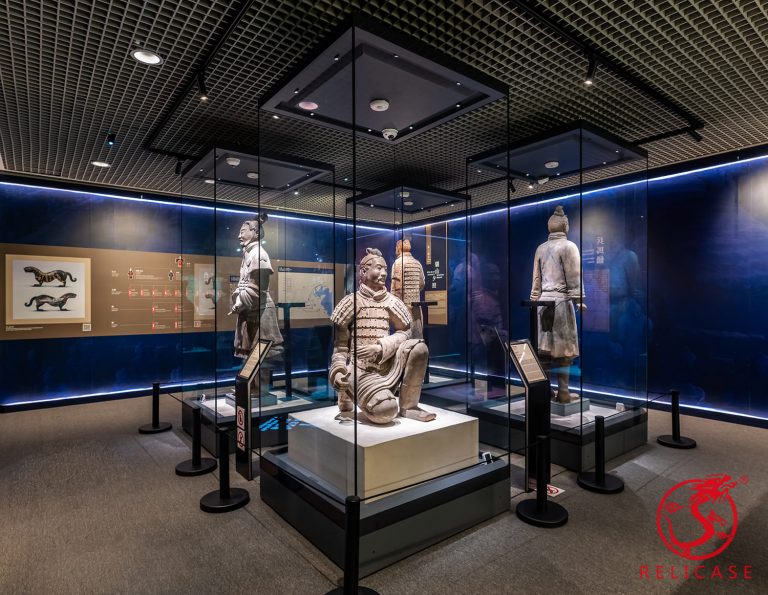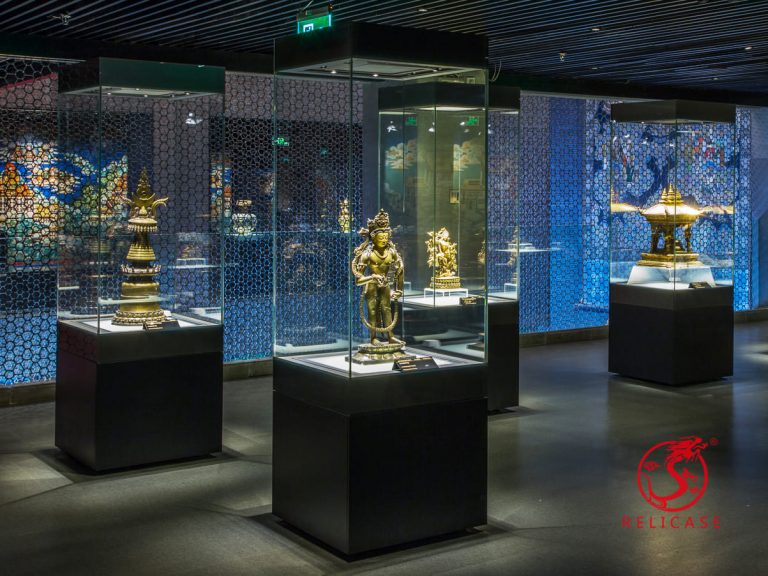what makes a case “museum” quality?
Museum cases are just the same as retail store showcases, but more expensive, right? Wrong! There are many reasons why you should not purchases retail type fixtures to use in a museum setting.
CONSERVATION- Conservatorially sound materials used in construction is perhaps the most important point. Retail casework is not concerned with long term exposure to chemicals and volatile vapors. Therefore they use the cheapest materials to make their cases including particle board, melamine and high VOC paints. VOC stands for Volatile organic compounds which are the parts of paints such as paint thinners and solvents. These types of paints are good for shop displays, but are problematic for museum work

SECURITY- Higher security is an issue with museums. Although jewelry stores may have higher value, they can control access to locks by keeping locks in employee only areas. Museums very often have to keep locks accessible to the general public because display cases are in the round or the access doors are part of the viewing area.
ENVIROMENT- Air circulation and environment control are major issues with museums. Needing cases with a low air exchange rate can exacerbate the need for conservatorially sound materials inside a case. Gaskets and proper building techniques are used in museum casework to keep air exchange rate down to 10% per day or less. At the very least, cases should be designed with dust seals to reduce housekeeping issues.
DESIGN- Clarity through design is key to showing off your collection. Common retail casework use frames to hold glass. Museum casework is best known for being ‘frameless’ in design and construction.
SIZE- Museum cases can be HUGE! Most fabricators that work in the retail environment do not know how to design and build cases that are large or complex.
Latest news

Museum Showcase Excellence: How Relicase Brought Ancient Shu Treasures to 300,000+ Visitors
Over 300,000 Visitors!Ancient Treasures of Shu Shine in Hengqin: The Mystique of Sanxingdui and Jinsha Captivates Audiences The special exhibition Ancient Treasures of Shu: Sanxingdui and Jinsha attracted more than 300,000 visitors, including nearly 60,000 from Hong Kong, Macau, and Taiwan, making up almost 20% of the total audience. On April 24, the three-month exhibition…

Relicase at Macau Museum: Safeguarding Heritage, Celebrating Legacy
Macau Museum: “Edification of the Masses — Cultural Treasures from the Zhou, Qin, Han, and Tang Dynasties” A Landmark Embraces Innovation The Macau Museum stands proudly atop the historic Mount Fortress, next to the famous Ruins of St. Paul’s. As an iconic symbol of Macau’s history and multicultural heritage, it now embraces the touch of…

Potala Palace
Abstract On April 26, 2017, Relicase completed the showcase project for the Treasure Hall of the Potala Palace in Tibet. The Collections Hall spans three floors and is divided into two major sections, showcasing a total of 273 individual artifacts and replicas, as well as 155 sets of artifacts (or 159 sets, including 147 sets…
